Gaming's grimmest Grim Reapers
Mortal man's greatest fear, shrunk into game form for your pleasure
Gaming's grimmest, reapin'-est Grim Reapers
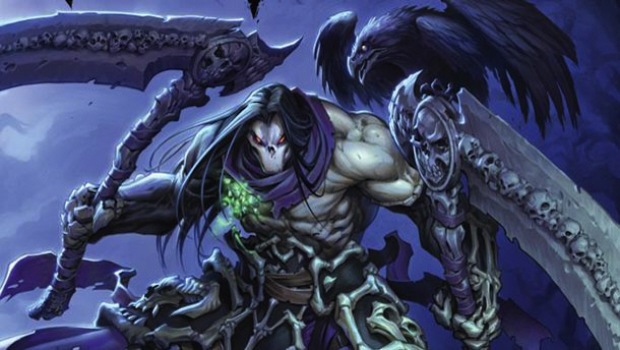
In this world nothing can be certain, quoth Benjamin Franklin, except death, taxes, and a save-room before the final boss. (Oh, fine, you track down the exact wording). And while the finer points of taxation remain largely unexplored in-game, Death's been haunting the medium since the penny-arcade days.
Here's ten standout appearances from our favorite personification of human mortality, at least until you can name another one...
Death Race
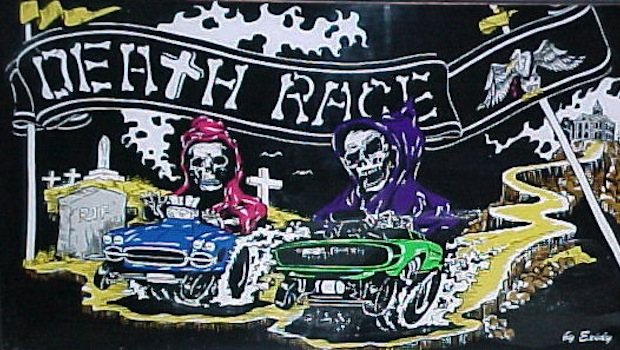
When Exidy's racer appeared in amusement parlors, the game's theme of Death vs pedestrians sparked a firestorm of moral handwringing that was still novel back in 1976. The game, casting players as a kart-bound Reaper tasked with running down gremlins, was labelled sick and morbid by concerned citizens. And then everyone sat down and worked out their concerns like adults, and that's why we've never had another drummed-up moral-outrage story since.
Because, media overreaction aside, Death's early appearance here is obviously laughably tame. You're looking at the game's marquee art; if it weren't for this, you'd have no idea the Reaper was even in the game at all. Supernatural shenanigans weren't even a part of later spinoffs, because running people over with cars is fine as long as a skeleton isn't behind the wheel? It was this sort of marketing savvy that catapulted Exidy to where they are today: a puppet label for something called Mean Hamster Software.
Gauntlet
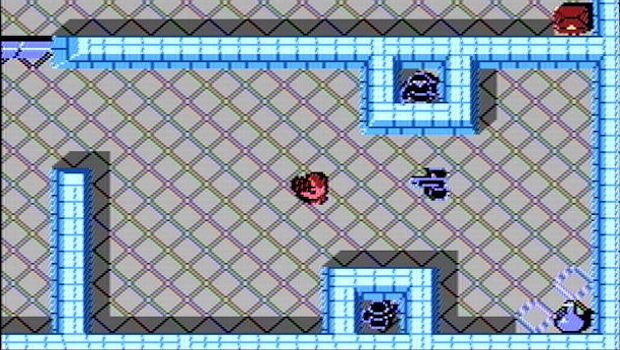
This is more like it. Clad in black, prone to stalking monster-infested corridors and lethal to the touch, Gauntlet's Grim Reaper is one of the game's toughest threats. In the mid-80s, Gauntlet was guzzling enough small change to put Jerry's Kids out on the street, largely thanks to the preponderance in later levels of this hooded, shrill monstrosity.
Shrill? Oh yes indeedy. Gauntlet's biggest departure from the canon besides being too badass even for scythes, sand-timers or other fancy frippery was to emit one of the most irritating sound effects in gaming history whenever your character came into contact. When your health finally ticks into the black and the screaming stops, suddenly you'll understand why people fight for the right to elective euthanasia.
Chakan: The Forever Man

Death plays a central role in Extended Play's 1992 platformer but the game's hook is predicated on a Reaper who's not quite up to the usual standard. What does this timeless lord of the underworld do when some chump in a witch-hat challenges him to a swordfight? Not only does he lose, but that's just the intro sequence: this is a Death so inconsequential that the developers didn't even think he was worth picking up the controller for.
Of course, it's still Death we're talking about, so there has to be a catch: the game's story documents Chakan's quest to free himself from Death's immortal curse, and culminates with the Reaper mocking Chakan for, essentially, failing to read the fine print on his Get Out of Dying Free card. Apparently Death's power over mortality was somewhat oversold... but his dickishness is as powerful as anyone ever told you.
Castlevania
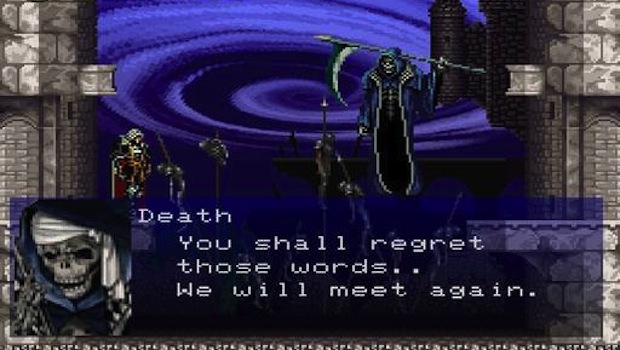
Konami's series has gone through several distinct iterations over the years, but a few factors remain constant. One of these is the assurance that, in between all the Medusa Heads and Flea Men and miscellaneous swear-inducing ne'er-do-wells, Death's going to show up and make your life more difficult. If you're extra-lucky, maybe you'll get to hear a speech first!
You may have a favorite or least-hated version of Death as envisioned by Castlevania. Sometimes he'll wait at the end of a punishing gauntlet of foes; other times he's right there at the outset, stealing your abilities and being a jerk about it. But then, the only two Castlevania titles to omit a battle with Death are the Game Boy spinoffs ie, two of the franchise's least essential entries. Make of that what you will.
Grim Fandango
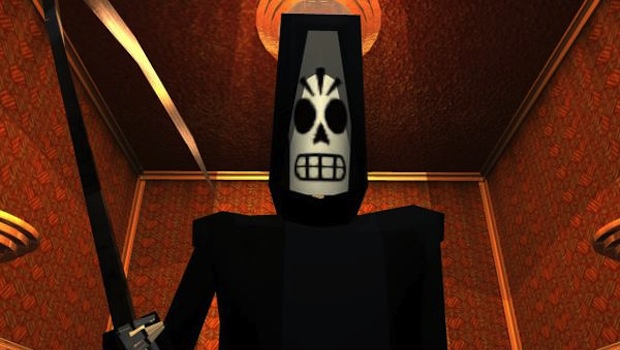
LucasArts' cult Dia de los Muertos adventure reimagines Death as Manny Calavera, supernatural travel agent responsible for ferrying souls from the realm of the living to that of the dead. He's part neo-Noir antihero, part jaunty walking Mexican sugar-skull, and all boogedy-boo skeleton. And he knows his way around a wardrobe.
But Manny's only one of many Reapers within Grim Fandango, and others are less scrupulous about their role in the afterlife forcing a reluctant hero's journey for Manny. Because this is Noir, that journey involves uncovering a massive conspiracy on the part of organized crime and corrupt officials; and because it's a Tim Schaffer game, this takes the form of lots of wit, lots of invention, and lots of point-&-clicking.
Discworld
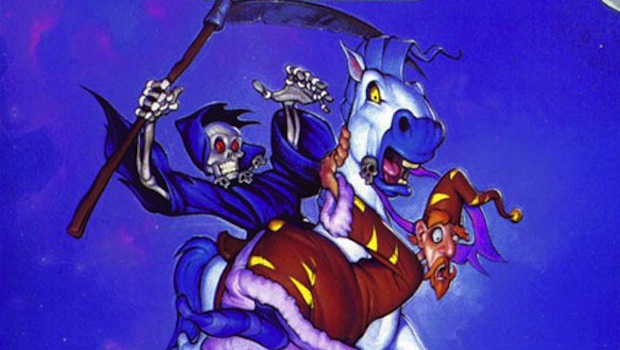
The Death of Terry Pratchett's Discworld books must rank as one of the most inventive contemporary iterations of the character. Less cruel personification of mortality and more put-upon skeletal salaryman, the character's a consistent fan favorite which is pretty impressive when you consider that HE ALWAYS TALKS IN ALL CAPS, LIKE AN UNCLE WHO HAS JUST GOTTEN HOOKED UP TO THE INTERNET. And, you know, he's always killing folk.
Accordingly, there's plenty of Death in the Discworld games: the two Playstation titles both place the character in a strong supporting role. Monty Python's Eric Idle, besides starring in both titles, contributed a song to the second game. It's called That's Death! and, as the title would suggest, it's all about our boy.
Sign up to the GamesRadar+ Newsletter
Weekly digests, tales from the communities you love, and more
Dante's Inferno
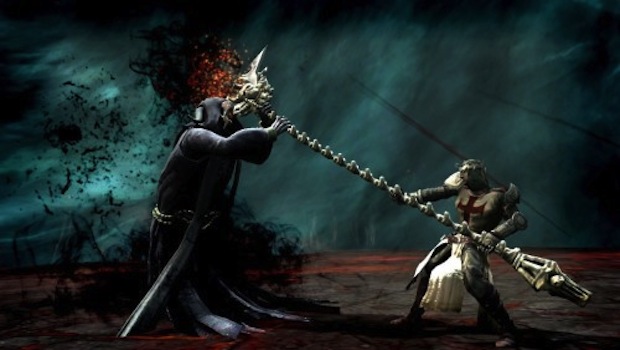
Look at this freaking King of the Winners. Dante's Inferno, like a couple of others on this list, presents a Death so formidable that you'll tick him off before finishing the first level. Many complained that this sequence detracted from the game's fidelity to the original text. Critics were silent, however, upon the discovery of additional manuscripts, thought to be penned by Dante Alighieri himself for inclusion near the beginning of the Inferno:
And then I came upon a hooded shade;
Scythe in hand, to take my life he tried.
"Is this really necessary?" cried I.
"Without a scythe," replied the shade,
"Thy labors will be less like God of War, hence not as good."
"Fair point," I did concede at last;
"Let's get this done and see some undead boobs."
Death Jr
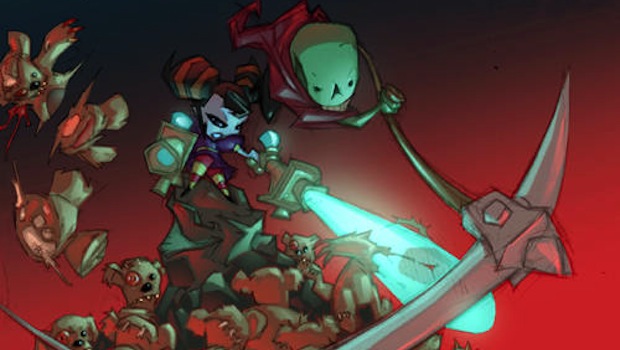
Sony chose Death Jr as the first game to show publicly on its new PSP back in 2005, thus associating the pint-sized Reaper with newness, fresh beginnings and all sorts of other things that should be antithetical to Death. But then, he's the child of the Grim Reaper, so obviously there's a lot of irony going on here. We think. Look, this isn't IronyRadar.com, leave us alone.
In many ways, though, Death Jr is the logical extension of cutesy-death franchises like Ghouls 'n' Ghosts: a pygmy skeleton with an outsized scythe and cheeky grin, because everything's better when it's cute even Death. Besides, the game's young-adult protagonists and schoolhouse setting make it a useful tool for teaching children about important things like Tim Burton and the existence of goths. Don't wait until it's too late, parents.
The Sims
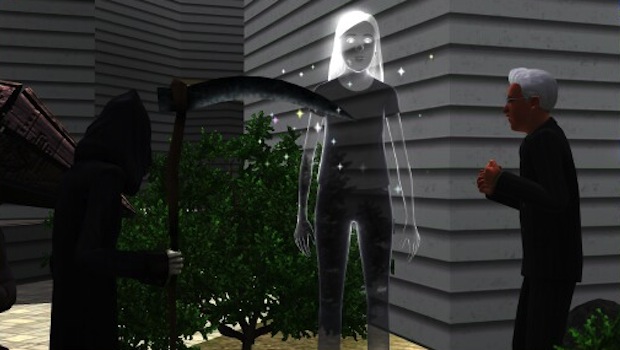
With the possible exception of Bob Dylan, Clint Eastwood and Dick Cheney, one day we will all of us die and become one with the dirt and worms. We might as well become accustomed to that fact the same way we nowadays learn about things like career pathways, physical intimacy and the joy of rampant consumerism: by encountering it in The Sims and making a funny YouTube about it.
Here's an excerpt from the Sims Wikia entry on Death: Death will, on occasion, interact with one of the items in the house before leaving. So far, he has only been known to get a blended drink from a minibar, watch television, relax on a bed, use the toilet, and play on the computer. Doesn't that sound like the kind of anthropomorphized principle with whom you'd like to party?


